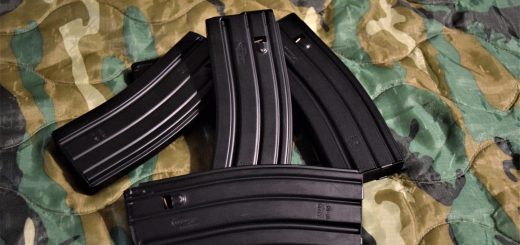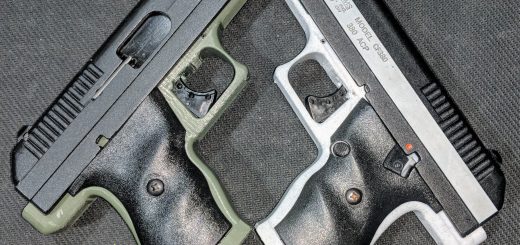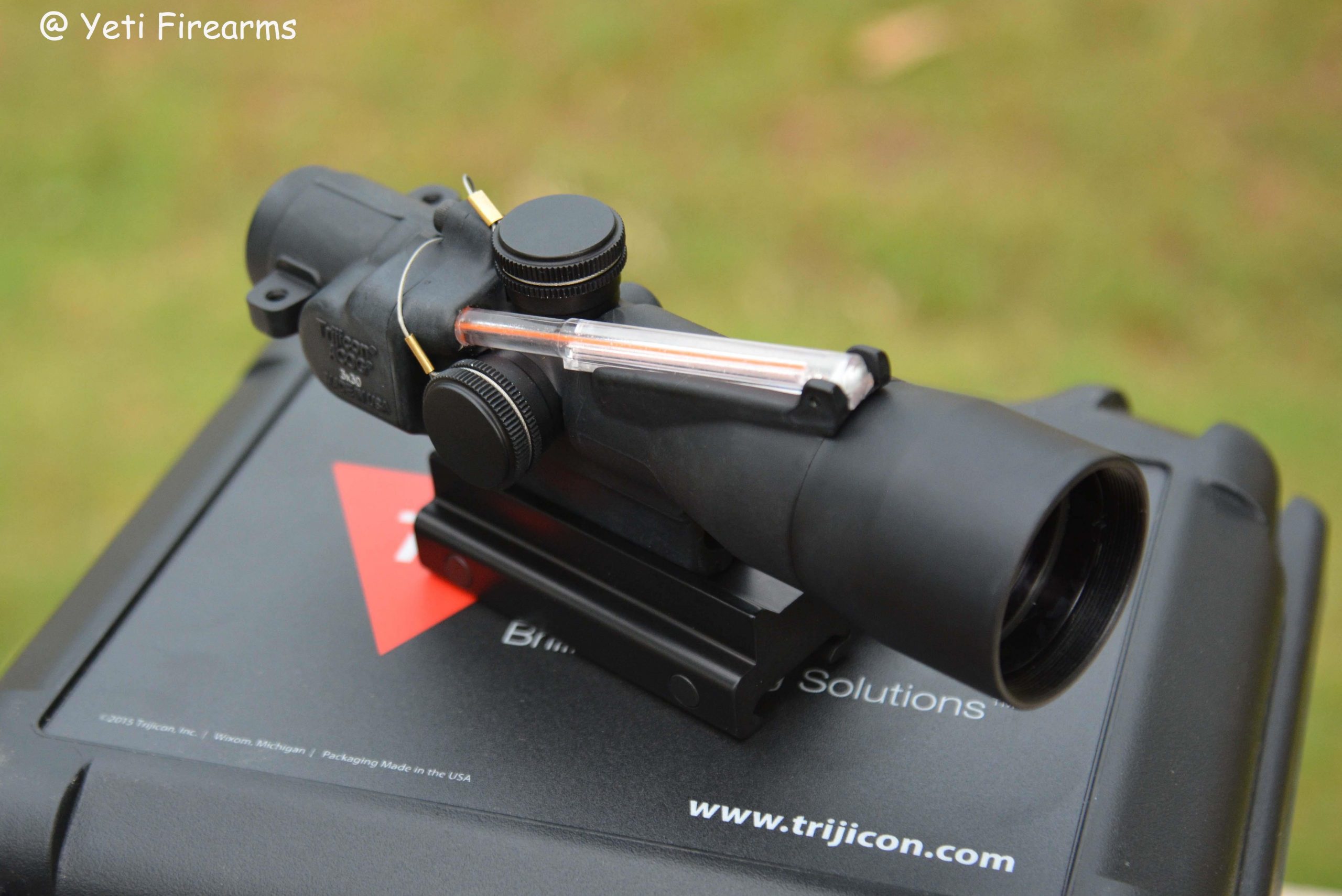The USMC M16A5 Concept: History and Build

Intro
With the recent adoption of the Sig MCX Spear in 6.8×51 as the Army’s Next Generation Squad Weapon, there seems to be a sense among some that “what’s old is new again”. Reverting from an intermediate cartridge to a full size cartridge, 30 round mags back to 20 round mags, viewing future warfare through the lens of Afghan combat at 600 meter distances rather than the short range urban engagements more commonly seen in Iraq or, more recently, Ukraine. What’s ironic is that this is typically the attitude you see with the USMC, and they don’t seem to be too inclined to touch the NGSW with a 10 foot pole.
The tweaking of our small arms and looking at a replacement to current issued equipment is nothing new. Whether it’s the SPIW, ACR, XM8, SCAR, M468, ICSR, the Army has been dicking around with replacing the Stoner system for a while. While all these programs were failures and time will tell if the NGSW will be added to that list, the Marines for a brief period of time in the early 2010s had their own attempt at modernization, but in a very backwards USMC style way. Seeing the writing on the wall for the M16A4 and the inevitably standardization of the M4 by all braches, the “everyman a rifleman” branch made one last ditch effort to keep their muskets and retain that particular part of their tradition and esprit de corps.
Concept
Teaming up with VLTOR, a company very popular in the late 2000s/early 2010s but have since declined in influence, the Marines made a concept that essentially emulated the Canadian C7A1- a 20 inch barreled upper mated to a lower with an adjustable stock. The superior ballistics as Stoner intended retained, but addressing the major issue with the fixed stock A4’s: urban combat in vehicles and room clearing. Rather than chop the barrel, they thought being able to collapse the stock (especially with the growing prevalence of armor) would be sufficient for most close quarter needs.
Most of the hard details of this project came from a Military Times article published back in 2013. The original link is kill, but the main relevant content of it survives in this archived Arfcom thread from the same time period: https://www.ar15.com/forums/General/-ARCHIVED-THREAD-Marine-Corps-Insider-Reveals-M16A5/5-1426793/?page=1

A further discussion of the merits of the concept were discussed on the site Loose Rounds, but unfortunately the site appears to be going through a migration and their old articles have been taken down (hopefully only for the time being). One of the most interesting tidbits from that article was a discussion of the A5’s proposed designation: ACMR, Armorer Conversion Marksman Rifle. This implies that the conversion from M16A4 to A5 would have been done on a unit armorer level as well as implies rather than replace the standard infantry rifle, this would have filled more of a DMR role. Comparing the implications of this designation against the later adopted M27 IAR and its later DMR version the M38 leads to some interesting thought experiments.
I’ll go into the details of the design below as I walk through how I went through my build and how it compares to the early reports of what the M16A5 was supposed to look like:
Lower Build
Pretty straightforward, M4 style lower with Vltor A5 system (spring, buffer, 7 position tube) which is the heart of the concept as it is the one with the most merit as it is still on the market being used by various companies today like Bravo Company and Sons of Liberty Gunworks. A more in depth explanation of the system and its benefits can be found here: https://www.arbuildjunkie.com/vltor-a5-buffer-system-overview/
VLTOR used the Tango Down grip and their own VRA lower in their concept, but USMC almost certainly would have stuck with the standard M4/M16 lower and A2 grip. The EMOD is visible in the concept picture and while VLTOR stocks do appear frequently in pictures taken in theater during Iraq and Afghanistan, its unknown if they would have been adopted with the Marines or if the existing SOPMOD stock would have been used instead. Mil Spec FCG possible, but again, ACMR implies a KAC two stage or Geissele may have been used (I used both a mil spec and Larue MBT in mine at different stages of testing).
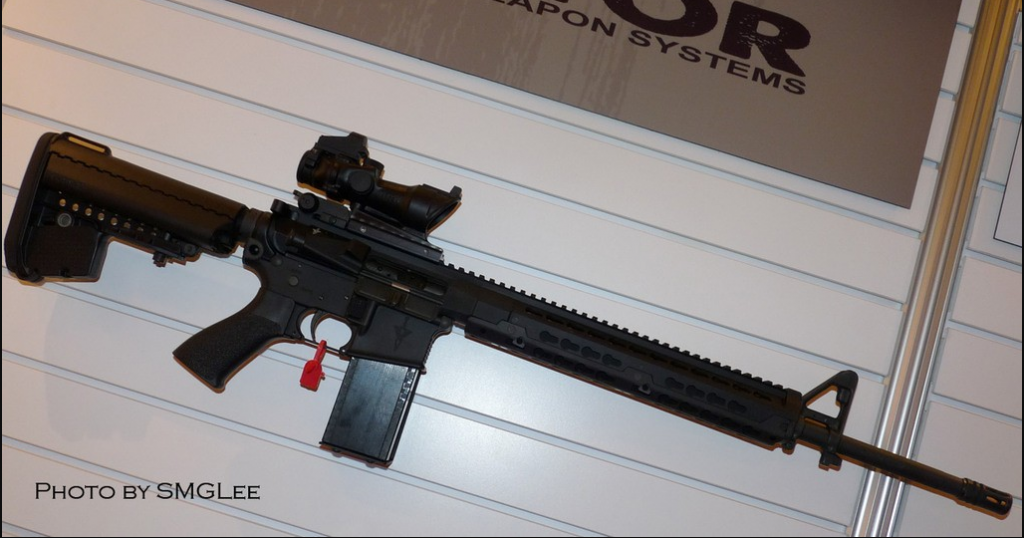
Upper Build
Upper receiver/rail- A little more open to interpretation. If you search “M16A5” online and look at pictures, most people elect to take an A4 upper complete with non FF M5 RAS and slap it on a lower with the VLTOR A5 and EMOD. If you trust the (admittedly scarce) details on the internet, sources suggest VLTOR also would have supplied a monolithic free float upper for the A5. Monolithic uppers were a pretty hot trend in the early 2010s with the LMT MARS and Colt’s 694x series they submitted to the SCAR trials so its possible that trend may have been fossilized forever in the A5. I specifically used the VIS KM12SL model that has a flat bottom giving it at vaguely M16A1 triangle handguard feel and also is a cleaner profile than the standard KM12:
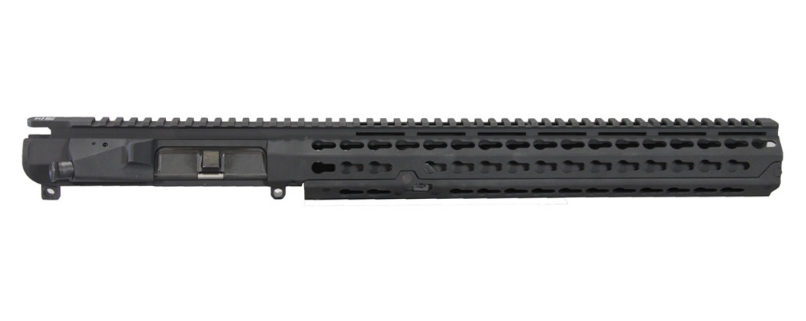
Another interesting possibility to consider is that KAC could have upped production of the rifle length Free Float RAS rails already being used on the MK12 MOD 1 and SAM-R rifles and the Marines would have used that in favor of the VIS KM uppers. I tend to think a free float is required for this build and I chose the VLTOR just due to its uniqueness (also rifle length FF RAS are currently unobtainium).
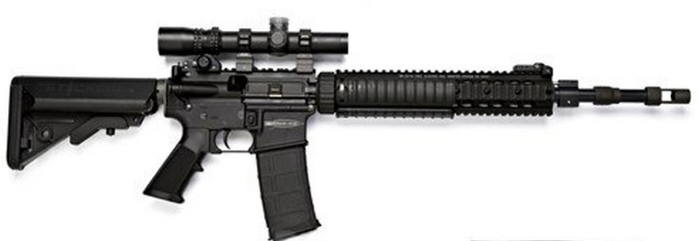
Sights
Rear sight: These can vary, I tried both a KAC and Matech. Military Times in their since deleted article regarding the A5 stated that the new rifles would do away with the A4 carry handle and replace it with the only slightly less huge LMT rear sight used on the MK18 MOD0. As some commenters and the author of Loose Rounds state, this would be dumb if used with any kind of magnified optic (personally they don’t make a lot of sense to me with red dots either) so one of the folding rear sights makes more sense.
Front Sight: The VLTOR concept picture shows and the Military Times article states the standard M16 F marked FSB would be retained. This is one of the most obvious deviations on the build I have which instead has the ARMS #41 folding front sight. ARMS has a 40 year history of providing components to the US military so its not too much of a stretch to imagine it on the gun, but it also provides another advantage. If the A5 were adopted instead of the gun that would eventually take its place- the HK M27 IAR- it’s possible these may have eventually been used with VCOGs, Leupold MK4s, or Schmidt and Bender variable power optics where a traditional FSB would be a hindrance. So while I used this with an ACOG which was designed to work around a FSB, if I chose to drop a more modern LPVO on it, I would be able to fold the front sight down so it wouldn’t interfere with the sight picture at low magnification.
Optic
The VLTOR concept picture appears to show a TA01 ECOS (non fiber optic 4×32 ACOG with a piggybacked RMR) but in all likelihood the Marines would have adopted it with the ubiquitous TA31RCO. I went with a TA01 partially because it’s the cheapest way to get into the ACOG game and also because the crosshair reticle to me lends itself better to a DMR in my opinion.
Overall Build list
-VLTOR VIS KM12SL monolithic upper
-Colt 20” govt profile barrel
-ARMS #41 FSB
-A2 Flash Hider
-Colt BCG and CH
–USMC KAC rear sight
-Standard M4 lower
-Larue MBT2s trigger
-Vltor A5 system (7 pos buffer tube, A5 spring, A5H2 buffer)
-A2 grip
-Vltor EMOD stock
-TA01 ACOG
Balance/Feel
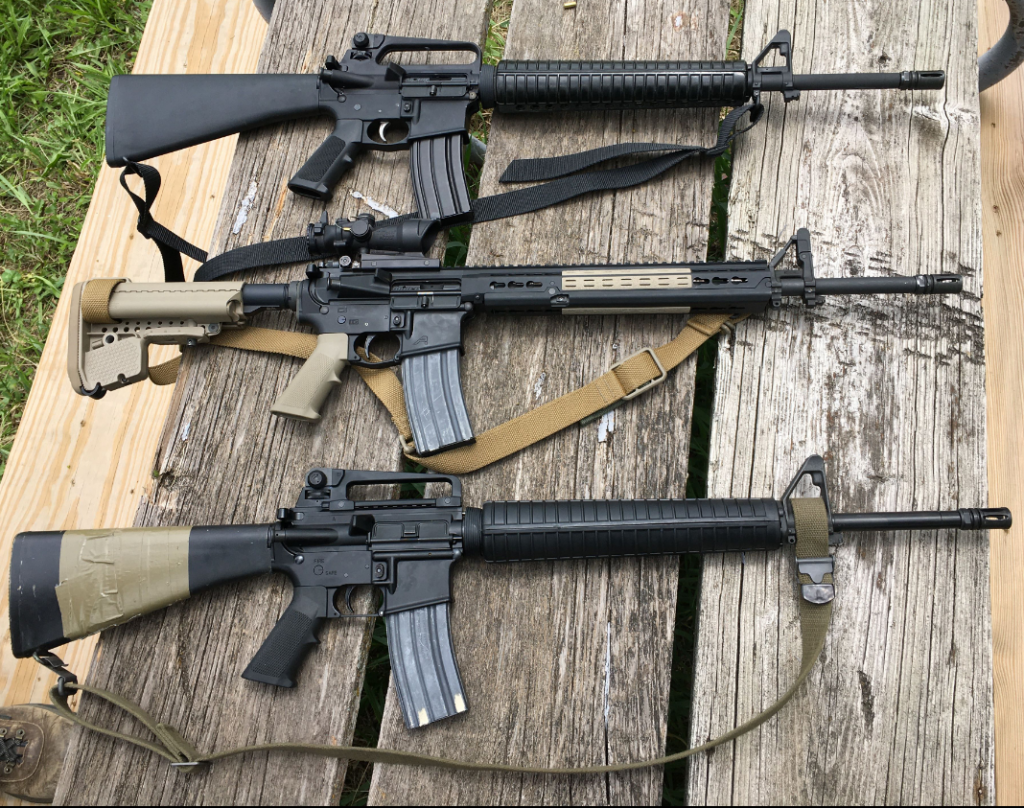
A couple of buddies I shoot with recently made a pair of M16 clones, one an A2 and one an A4 but the latter had the plastic clamshell handguard and a removable carry handle so it was in essence an A2. I noticed both guns balanced supremely well and it filled me with a sense of longing nostalgia for the days of yore when my unit was still issued A2 muskets instead of M4 Carbines. In comparison the A5 was front heavy despite having nothing but rail covers and a couple QD sling mounts on my integral keymod rail. The weight of the TA-01 also didn’t help its balance but I think even if had it off, it still wouldn’t be as good.
That’s not to say it’s horrible, I’d be willing to bet if my friend had put a KAC M5 RAS that came standard issue on USMC M16A4 rifles they would be pretty similar or possibly lighter by a few ounces on the A5. Whether or not that would be perceivable is another question.
The A5 buffer system was interesting. I shot each rifle back to back and found the A2 and quasi A4 to shoot pretty similar but the A5 was a bit different. While the first two felt very inline the A5 felt a little wobbly by comparison. Again I attribute this mainly to the ACOG squatting on top of the rail, but I still felt like the recoil impulse was more reminiscent of a carbine than the full size rifles. However, shooting my 11.5 pistol upper on the A5 lower (with a brace of course) was surprisingly more pleasant than shooting it on a normal carbine lower with an H2 buffer. It is no surprise to me after this range trip why companies like BCM and SOLGW are still using the A5 system on SBRs.
Close Range Practical Shooting
On the same range trip my friends and I were shooting our clones, we decided to compare our builds in some roughly “practical” shooting scenarios. Torso plate out at about 75 meters for some behind cover shots then run over to another station to engage a 9 inch plate closer up. The ACOG gave us an obvious advantage at 75 and honestly I didn’t find it too much at 25-30 meters for the plate either. Again the front heaviness of the rifle was felt when performing tactical reloads compared to the A2, but while shooting it wasn’t as obvious. At the end of the day we all agreed the A5 was the obvious preference for tactical shooting. Interestingly compared to shooting stationary where we mostly all had the stock set at position 3, we needed to push it in further to position 1 for dynamic shooting.
Accuracy at 150m
While certainly not the best example of long range shooting with this platform, 150 meters was the best I could do with the ranges I frequent. I shot the below target after confirming zero and also had no trouble hitting a couple gallon milk jugs with neon food coloring at this distance either, once shot apiece. Combat accuracy even with a chrome lined military barrel was certainly there, but I also think this group would have looked pretty similar regardless of free float/non free float handguards.

Closing Thoughts
Sources online put the weight of a M16A4 with KAC rail and ACOG at 9.5 lbs. Using a home scale, this rifle came out at just over 9 lbs. While slightly lighter, I think I ultimately prefer the A2 stock as far as recoil impulse goes, but the ability of the A5 to reduce the LOP was helpful in certain situations. That said, being on the upper end of the manlet scale at 5’10”, I was surprised that despite having 7 positions, really anything above position 3 was unusable. This was compounded by the very short eye relief of the 4x TA01 and also when the situation involved moving around and shooting offhand.
Despite an interesting concept, it’s not hard to see why this wasn’t adopted. It seems like the A5 project was an attempt to combine the general purpose rifle aspects of the M16A4 with the free float handguard of the SAM-R, with the adjustable LOP of the M4 Carbine and all of these traits ended up being much more neatly packaged in the M27/M38 platform adopted in 2017.
Even if the A5 didn’t stand much of a serious chance at adoption, I have been looking forward to writing this review for a while as I believe this is an example of a build trend we may see in the near future. Between the sunset of the Assault Weapons Ban in 2004 and the end of the Obama administration in 2016 the AR market went through an enormous renaissance. Special Forces personnel across conflict zones in the Middle East were experimenting with different commercial off the shelf components and in some cases even full rifles. Pictures of operators with Noveske Afghan carbines, Larue OBRs, and the Navy EOD version of the CQBR are all over the place online and due to the inherent commercial nature of these products, are (or at least were) easily sourced on the civilian side.
Nowadays certain parts might be a little on the rare side when it comes to things like Magpul F93 stocks, or VLTOR CASV rails, but hunting them down isn’t impossible and will result in an impractical by modern standards but very interesting slice of the history of the AR-15 not only militarily, but also for those of us on the civilian side as well. So who knows, maybe down the line I’ll do another in depth look at one of these modern GWOT classics.
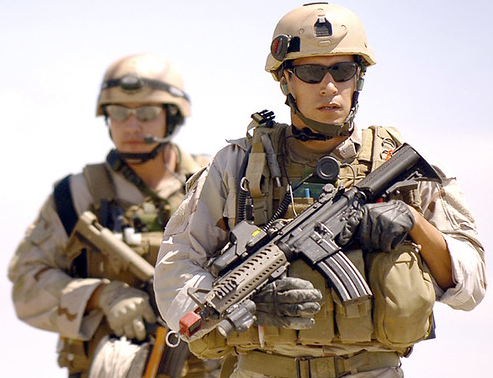
Back to Kommando Blog
